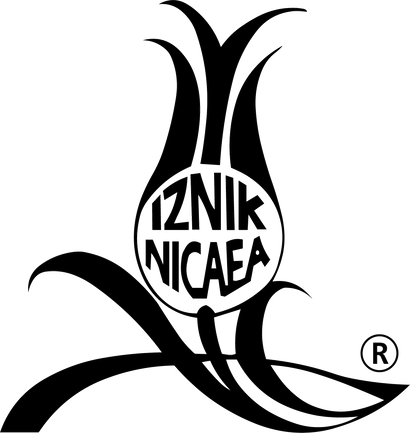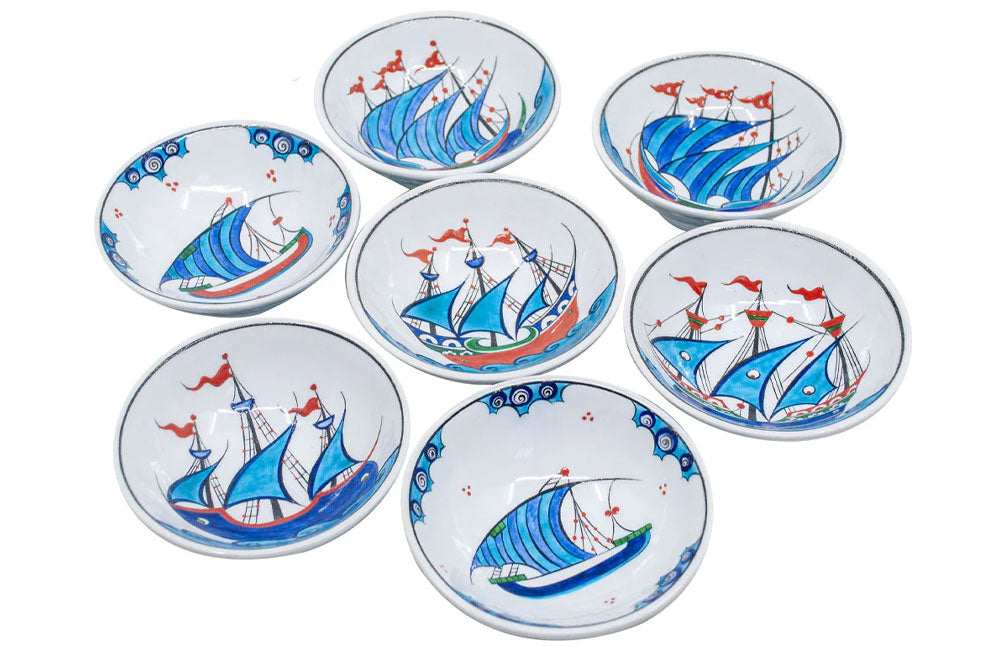Welcome to Iznik tile world
Welcome to Iznik tile world
The Potter's Art - Mehmet Gursoy
June 27, 2017 4 min read

In 1987, Mehmet Gursoy formed a new partnership called İznik Çini. His intention was to recreate the excellence of the iznik tiles of the sixteenth century that is named today for the town of Iznik, thought it was made in its own day in both Iznik and Kütahya. Partnerships are volatile, fragile things in Kütahya. His four original partners and many of his students have left him, carrying the İznik Çini aesthetic into other shops, and Mehmet is the master of an atelier where he teaches bright young women, three of whom, he says, have surpassed him as painters of çini. Mehmet is a great teacher.
Mehmet Gürsoy endured criticism for naming his shop after another city, and for focusing so tightly on the works of the masters he calls his teachers: the dead potters of sixteenth century. But their palette of six colors featuring a luscious red, and their harmonious floral designs, have become his own. Mehmet's goal, he said when he began, was not freedom or novelty, but excellence. Willingly accepting the restraints of tradition in order to learn, Mehmet narrowed his vision to force progress. By 1991, the works in his atelier were approaching the past in material quality, and by trading the loose handling of the old works for modern Kütahya's impeccable precision, Mehmet beleived they had outstripped the past in painting.
Another five years and the revival was complete. Basing his concept on the master-pieces of the sixteenth century, Mehmet first added flourishes that he called "aesthetic in the last degree," and then he exploded the old partners across the surface of his iznik plates. His dazzling, energetic works refer to the past but emphatically belong to the present, suiting the opulent decor of the Turkish middle-class home.
The aesthetic quality of Kütahya's ceramics abides in technical mastery, in radiant materials and fastidious painting. Then, pulled through the eye by beauty, the mind is engaged by historical reference. In acts of revitalization, bringing the excellence of thirteenth-century Konya, fifteenth-century Bursa, sixteenth century Kütahya and İznik, and twentieth-century Kütahya, into fresh being, the potters celebrate the tradition that was given, Mehmet Gürsoy says, as a special gift from God to the Turkish nation. In association with works from the past, modern Kütahya çini becomes a symbol for its creators and their patrons of the place they share: this city, this region, this grand country. The masterpices of iznik tiles in the sixteenth century, so dominant in the thinking of the potters, carry them back not only a time of artistic excellence, but as well to a time Turkish greatness, when the Ottoman Empire stretched from Morocco to Iran, from the Sudan to the gates of Vienna, and Turkish power was founded upon Islamic precept.
The flower ornaments nature, as art ornaments the human environment. With amazing frequency, the world's artists match their art to nature's by choosing the beautiful, useless flower when they turn to decoration. Flowers accompany the statues of the deities on the altars of Buddhism, Hinduism, and Catholicism. Where no icons is worshiped, in Muslim, Jewish, and Protestant contexts, flowers still bloom on the face of art. The picture of a flower evinces an affection for nature, and flowers provide a worldly foretoken of the garden of paradise. Those ideas are raised by floral imagery, but the artists of Kütahya deepen meaning in subtle interpretation.
Mehmet Gürsoy tells us first note that the flower is not realistic. Some are fantastic, dream flowers, but even when they are tulips and roses and carnations, they are solid and super-naturally perfect. The flowers on the plate are not the blossoms that wither and die on the hillside. They are not renditions of the transitory surface, shadowed in time, but revelations of eternal essences; they are to flowers as the soul is to the body. Made abstract to be symbolic, the flowers on the plate, Mehmet says, stand for human beings, not for their mortal bodies, but for their immortal souls.
Then note, Mehmet says, that all the flowers, thought they are of different varieties, spring from one root. A clump of grass or a dot of red, that root, he says, is a symbol of God's will, like the point at the center of the geometric design. We are not in the realm of mere botany. From one root, different kinds of flowers grow: some are tulips and some are roses, some are large and some are small, some are red and some are blue. And from the will of God, different kinds of people grow: some are women and the others man, some are tall and the others short, some are black and the others white. Only Gos is one. Nature is diverse and imperfect. People are different at birth, and they are further differentiated by conditions. Some live long lifes, others die young, and all are blown by the winds of chance. Mehmet's iznik plate pictures the inner reality of existence. Beautiful forms lift from one root. They rise and sway and break in the wind, but together they shape a balanced composition within a perfect circle.
Balance, Mehmet says, is teh key to the aesthetics of design. Accomplished most easily in symmetry, as it is on the geometric plate, balance is more challenging to the artist and livelier to the eye in asymmetrical configurations.
In Japan, the master of pottery called sensei. The same title is given to teachers in schools. The educational implications of the terms sensei and usta fit ateliers like Hirohisa Tatebayashi's in Arita or Mehmet Gürsoy's in Kütahya. As Mehmet emerged as an artist in the eighties, he told me his goal was to become the loving master of a workshop. He would teach and his students would become his hands, performing to his will. His goal has been met.
Also in News
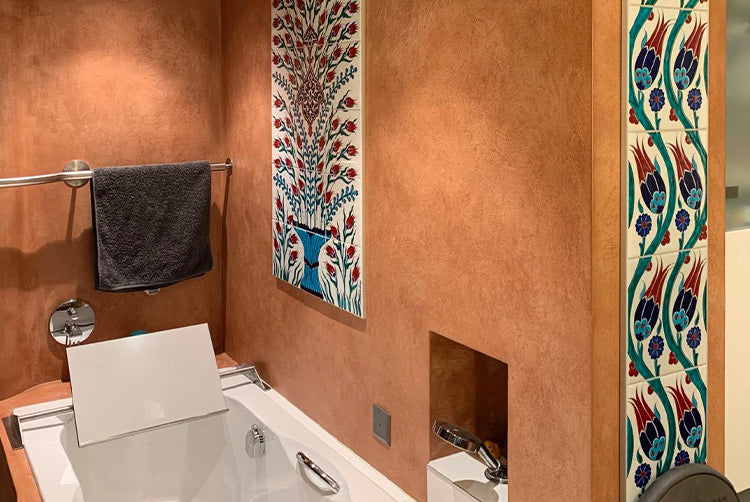
Iznik Bathroom Tiles: Combining Traditional Art with Modern Bathroom Design
December 09, 2025 1 min read
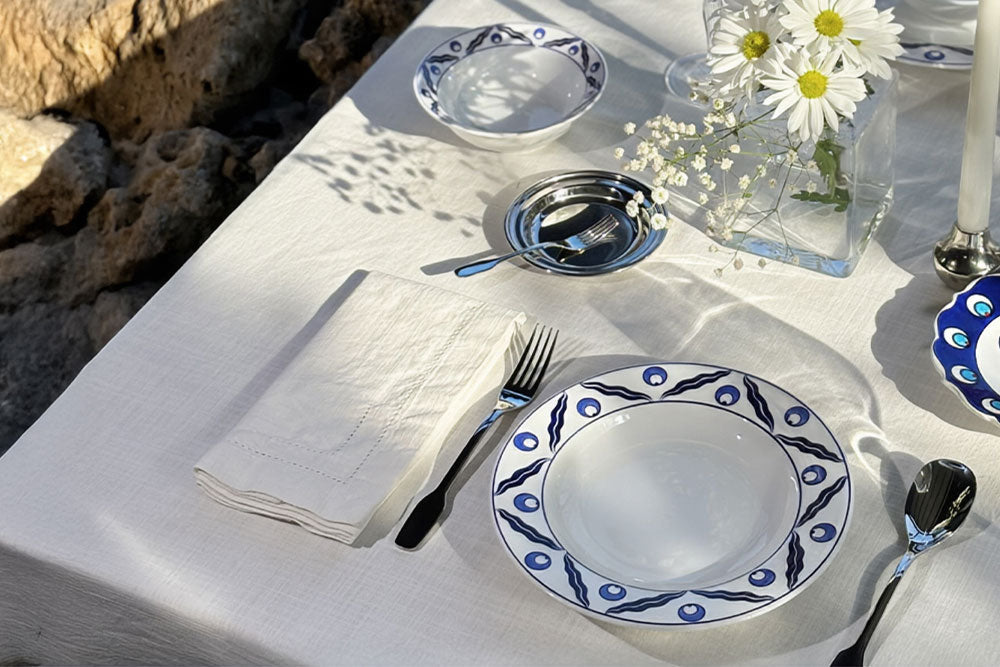
Rediscovering Timeless Beauty: Handcrafted Iznik Ceramic Dinnerware for the Modern Table
April 08, 2025 2 min read
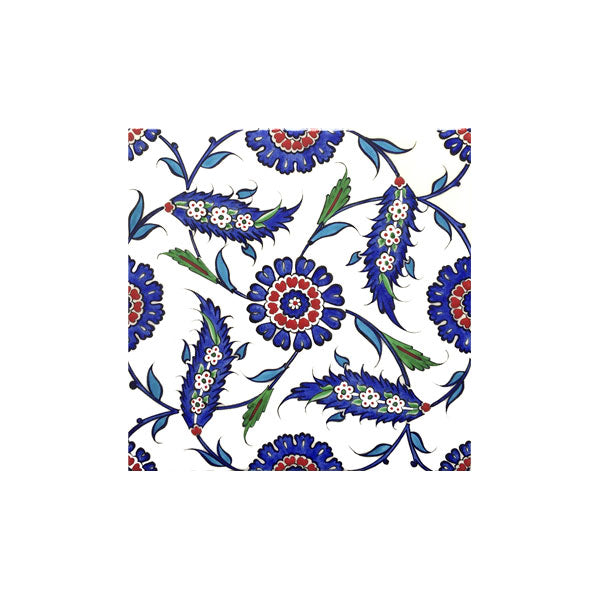
Thank you for being here!
Join us to discover the latest in Iznik tiles, enjoy special offers, and celebrate the beauty of Turkish artistry together.
